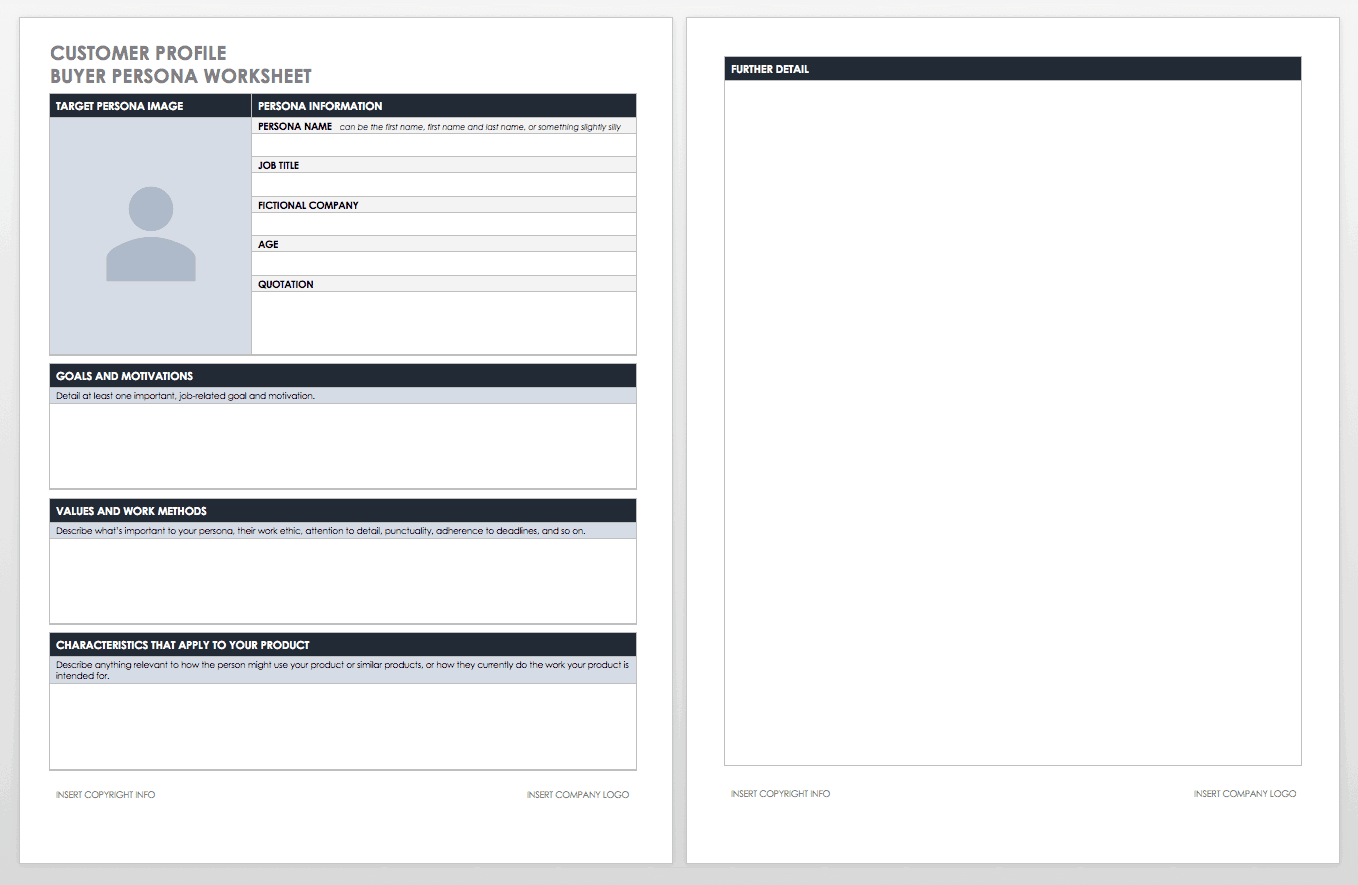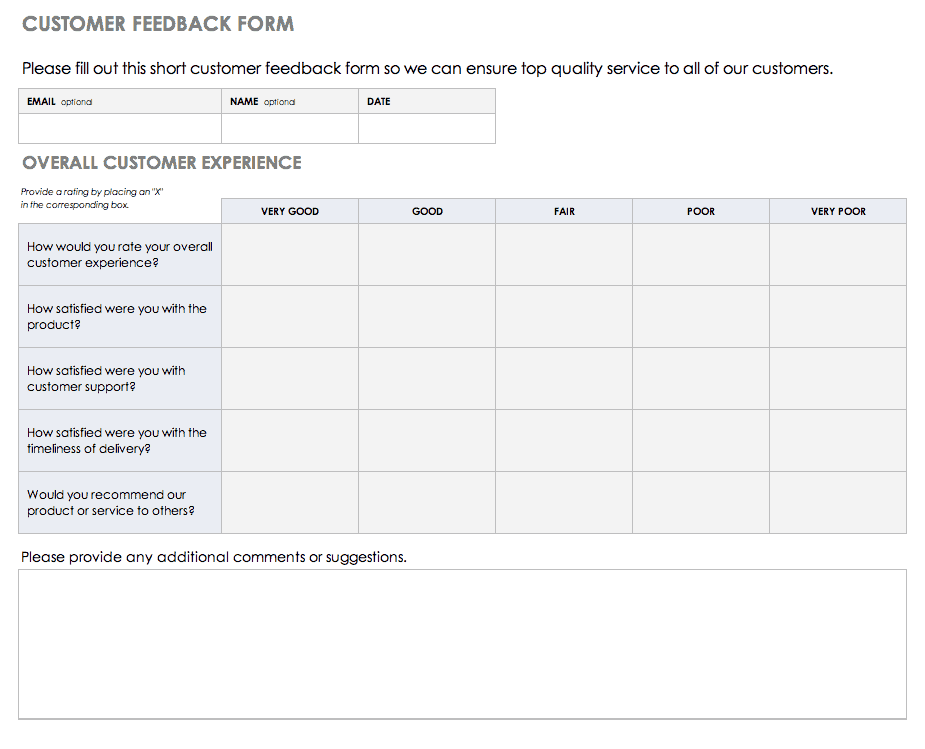What Is Customer Engagement?
Customers become (or remain) engaged when they interact with a brand in a way that creates or enhances their relationship with the company. Real engagement happens when a customer begins to have an emotional connection to the brand, instead of merely viewing their relationship as a product or service transaction. Forward-thinking brands are shifting from thinking of customers only as people who buy their products, and instead as valuable relationships that require long-term nurturing.
The customer and brand can interact throughout the customer journey, starting with the customer's increased awareness about the organization, all the way through purchase and retention. Each interaction between the customer and the company adds to the engagement level – either positive or negative. Touchpoints on this journey can involve every type of contact: online, phone, and in person. The most popular contact most often takes place through content, social media, and email.
Coca-Cola has done an exceptional job of creating deep customer engagement across decades through various types of interactions. Many consumers immediately think of Coke the minute they hear the opening notes of "I'd Like to Teach the World to Sing," from the famous commercial initially created in 1971 and revived over the years. In 2011, the brand combined all media – television, physical, and digital – to create the "Share a Coke" campaign, which helped bring people together over the product.
Today's consumers engage with brands in many different places and ways. Customers expect the conversation that begins in one place to carry over to the next interaction. Organizations focusing on customer engagement must have a holistic omni-channel strategy – which means providing consistent experiences across all offline and online channels.
Retailers selling products both in their brick-and-mortar stores and face-to-face direct sales in consumers' homes particularly struggle with regular engagement across their online and in-person interactions. They often suffer from lack of analytics data, organization silos, and difficulty identifying customers across channels.
Characteristics of Engaged Customers
Engaged customers are more than people who buy your products. They become fans who are loyal, involved, and responsive.
These customers seek out your brand when they need industry expertise and interact consistently with you on social media – your brand becomes a part of their life. Even more important is how these customers demonstrate this attachment through their actions, whether by promoting your brand online, through word of mouth, or both.
Why Is Customer Engagement Important?
It's easier and less costly to sell to an existing customer than to attract a new customer. To gain loyalty and commitment, an organization must deliver value throughout the customer journey — which starts with engaging a customer.
Customers have a wide range of options when it comes to any product or service. Successful brands make a cornerstone of keeping current customers engaged, as existing customers are excellent sources for recommendations and repeat purchases. Gallup research shows that customers who are fully engaged represent a 23% premium in terms of share of wallet, profitability, revenue, and relationship growth over the average customer.
Alternately, disengaged customers can mean much more than lost revenue for companies. Disengaged customers can detract from your brand and cause you to lose other potential and existing customers. Unlike engaged customers who offer positive recommendations, disengaged customers often criticize your brand.
The good news is that increasing or improving your engagement activities can often help you win back disengaged customers.
Customer Engagement Models
Companies can’t focus on customer engagement only once – or even only once during the customer journey. Organizations that want to achieve high levels of customer engagement must focus on engagement throughout the entire relationship with the customer, which begins well before they purchase their first product from you.
The stages of the customer journey include the following:
- Awareness: The potential customer is in the process of developing awareness of a particular marketplace. They do not know they have a problem that can be solved by your product.
- Consideration: The potential customer knows they can use a product like yours, but it may not be in their budget. During this phase, they are aware of their challenges and the fact that your product can help solve their issues, but have not yet made a decision to purchase.
- Evaluation: The potential customer intends to purchase the product from a brand. During this phase, the customer actively researches products, including your brand’s offerings. You no longer need to convince the customer that they have a problem or that the product will help make their life or business easier. Now, you must convince the customer to choose your specific product over competitors.
- Purchase: The customer purchases a product from your brand. Their experience during the purchase process, especially in terms of service and support, plays a significant role in their satisfaction, loyalty, and future engagement.
- Growth/Retain/Nurture: Customers in this phase are exceptionally valuable and should be treated as VIPs. By continually providing value to these customers, you can grow engagement, which means that they will likely advocate for your brand.
The following model demonstrates the stages of the customer journey and examples of outreach and education that can contribute to engagement at each stage.
Customer Engagement Strategies
The goal of a customer engagement strategy is to develop a plan that will earn your customer's loyalty and return business. The strategy is the process of identifying and understanding your audience, engaging them, acting on feedback you receive, and monitoring KPIs.
How to Build a Successful Customer Engagement Strategy for Your Company
Engaged customers directly impact profit and growth, so organizations must develop a strategy that appeals to their target customers. Understanding the brands they frequent, how they buy, what they do with their free time, where they work, and how they spend their money will feed your strategy. Your customers' emotions drive all of these actions – and you need to understand how to tap into them.
Once you understand your customers' habits and emotions, consider how your customers engage. One of the most appealing methods for engaging customers is to provide them with a seamless omni-channel experience. For example, doesn’t it make you happy when you refill a prescription online, and when you call the pharmacy, they immediately provide you with an update based on the telephone number you are calling from?
Integrating interactions across all channels is essential to providing consistent and personalized engagement. This means that your engagement strategy must consider all touchpoints: mobile, laptop, social media, chat, and website. The message and interactions must be consistent with seamless transitions.
Nancy Bhagat, CMO, Serviceaide, suggests the following: "Consider integrating artificial intelligence (AI) into your already established customer success initiatives. A virtual agent can quickly learn and respond to requests previously handled by employees. This allows you to meet the needs of many of your customers, leverage natural language processing (NLP) for relevant communications, and proactively anticipate problems and connect similar service requests.
“In addition to improving your service and support, you can free up your IT staff for more strategic workloads. We have seen success across many industries, including travel and hospitality, government, and financial services, as companies look for efficient and meaningful ways to improve their customer service and prospect outreach," Bhagat says.
Aberdeen found that "companies with well-defined omni-channel customer experience management (CEM) programs achieve a 91% higher year-over-year increase in customer retention rate on average, compared to organizations without omni-channel programs. These organizations also average a 3.4% increase in customer lifetime value, while those without omni-channel programs actually diminish customer lifetime value by 0.7% year-over-year."
Use the following process to create a customer engagement strategy:
- Identify the Target Audience: To create meaningful experiences that build engagement, start by fully understanding a customer's needs and challenges. While many companies define their target audiences with customer personas, these personas often identify only basic demographic information (i.e., sex, age, and possible income).
Carhartt took this concept to the next level. The company’s interactive videos contain imagery and voice overlays that speak directly to its target audience of people who work outdoors in cold climates. Instead of simply watching the videos, consumers can click on products for more information and see the different layers inside the Carhartt jackets. According to KERV, the video production company that created the campaign, the videos averaged a 2.4% click-through rate (more than 1,040% above the 0.21% industry standard), which demonstrates a high level of engagement.
Start by building customer personas that clearly define all aspects of the customer: their needs, wants, challenges, concerns, and passions. This persona then becomes the cornerstone for every decision in creating the customer journey for your brand. Without this level of detail and understanding, it is likely that your efforts will miss the mark, resulting in unengaged customers – and potentially disengaged customers.
Use this buyer persona template to create a greater understanding of your customer's motivations, challenges, and buying habits.
Download Customer Persona Template
Word | PDF | Smartsheet
- Define the Customer Journey Map. Without a defined customer journey, you leave the interactions between your customers (and potential customers) and your brand to chance. This means that you are not controlling the interactions and delivering experiences that build relationships with your customers. Gartner found that According to the 81% of brands using customer journey maps report exceeding customer perceptions. According to Gartner, “in our 2019 CX Management Survey, 81% of brands that have and use journey maps say they exceeded customer perceptions.”
Gartner “Use Gartner’s Buy/Own/Advocate Framework to Map Customer Journeys and Deliver Better Customer Experiences,” Augie Ray, 1 October 2019
Starbucks has a long history of high customer engagement that centers around creating a customer journey through its mobile app. With over 16.8 million active users and 41 percent of its sales worldwide in 2019 Q2 from rewards users, the program is one of the largest and most successful, reports Starbucks.
But the company doesn’t simply use the program for advertising – the app also saves customers time when ordering, shows additional menu options, and earns customers free personalized rewards. Starbucks proactively interacts with rewards members by reminding them of special events and offers and even putting the events on their mobile calendar (with permission, of course).
While the three main phases of the customer journey – buy, own, advocate – are the same across brands, each brand should customize and expand the phases based on their specific customers and products.
Here are four steps to designing your customer journey:- Observe and document all multiple-target customer types' behavior in real time. Document similarities (and the number) of prospects that accept the offer and take action. Determine how many engaged users bounce off without taking action, such as a prospect following a social media link to the blog, but not subscribing.
- Identify points of interaction. Note where customers are likely to reach out to the brand. For example, do most newsletter subscribers eventually purchase the product, or are support calls common during the first seven days of ownership?
- Determine breaking points and action points in the journey. Look for places where the brand loses contact with potential customers or actions that happen before customers do not make another purchase. Also notice actions that are common in customers who become advocates, such as interacting with the company weekly on four different channels.
- Design the ideal customer journey. Use the information gathered in the previous steps to purposely create a journey (with intentional interactions) that leads to engaged customers. Start small, such as rolling out a portion of the journey, then add more interactions after seeing success and positive results.
- Define KPIs/Metrics. By defining key performance indicators (KPIs), you can measure both the successes and failures of your business. KPIs measure the level of customer engagement and allow you to make changes based on performance. However, many companies mistakenly pick the wrong KPIs to monitor, which limits their engagement. Select the KPIs that directly tie into your business and engagement goals.
- Humanize Your Brand with a Voice. When you speak to your customers in a consistent way throughout every interaction – in person and digital – your company sends a consistent message. By having a set brand voice, your brand becomes more human, which makes it easier for your customers to have a relationship with your company instead of viewing your brand as only a product or service provider. MoonPie’s Twitter account is an exceptional example of a company cultivating a unique brand voice through humor. This strategy has attracted a large following (over 300,000) for a snack cake.
If you don’t already have a brand voice, make it a priority to create the tone that represents your company. You want your brand voice to reflect the culture and values of your company. More important, the voice needs to resonate with your target customer. Since many different people interact with customers and create digital messages, document your brand voice and ensure all messages are in line.
Also consider putting faces on your brand voice by identifying influencers and key employees. Look within the company for people who are passionate about the brand, and help them become thought leaders and brand evangelists. Provide ways for those people to share their voice in blogs, videos, webinars, and e-books. - Engage with customers on social media. Social media allows brands to become a regular part of a customer's daily life, and it allows customers to interact with the brand more casually. Social media offers a unique opportunity to engage customers on topics that they care about. Many brands miss this chance by using social media primarily for self-promotion and not as a two-way conversation with customers.
Alison Munn, Social Media Marketing Consultant, says, "Social media customer service can be an effective alternative to traditional customer support channels. Twitter, for example, allows you to personally engage, meeting customers where they prefer to communicate.
“Whether it is a question, feedback, or complaint, customer service representatives can utilize social media to quickly provide relevant information rather than asking the customer to take to a channel that they may consider less convenient, such as email. In addition, your customer success team can further engage by following socially active customers on their preferred channel. Sharing content, commenting, and messaging builds an invaluable one-to-one connection that may provide you with the coveted customer recommendation the next time you need one," she says.
Consider this: If a friend or family member never responded to your texts or calls, you likely would not continue the relationship – or you'd at least step back from it. Brands that do not personally respond when customers interact over Twitter are, in essence, saying that the customer does not matter. But brands that quickly respond to tweets, mentions, and comments quickly see customer engagement rise. Additionally, social media allows brands to easily measure engagement and interactions, as well as test out new messaging and ideas with very little expense.
In addition to creating campaigns, look for opportunities that come from customer interactions. When 16-year-old Carter Wilkerson asked Wendy's through Twitter how many retweets he would have to get to earn free chicken nuggets for a year, the brand's response was brilliant: 18 million. The result was an exceptionally popular Twitter campaign, #nuggsforcarter, that broke the world record for most retweets.
Instead of ignoring the tweet, the brand created an authentic experience that inspired many Twitter users to engage with the brand. Wendy's then created even more engagement, both for Carter and his fans, by giving him free nuggets for the effort. - Personalize customer experiences and communications. Simply putting a customer's name in your emails is no longer enough. Customers expect a personalized journey based on information that they have shared and on past interactions. Accenture reported in its 2018 Personalization Pulse Check report that 91 percent of consumers make purchases from brands that provide personally relevant offers and recommendations.
Use the following tips for personalization:
- Create quizzes and deliver information based on the results.
- Recommend products based on browsing history.
- Ask questions and listen to the answers.
- Show your appreciation for your engaged customers by mentioning them on social media or sharing customer profiles.
- Create useful content that provides value. Today, when you have a question or challenge, you likely head straight to Google or your favorite source on the topic. When a brand provides the answers that a person needs, a relationship begins to form.
As the consumer increasingly turns to the brand for information and finds content that solves their problems, that consumer begins to trust the brand – that is the underlying reason brands increasingly turn to content marketing. When the customer goes to purchase a product, it's almost a given that they will buy from the brand that has already proven they understand their needs.
LEGO taps into user-generated content to keep customers engaged, and its efforts have resulted in currently more than 8.8 million subscribers for the brand. One of its most successful campaigns is LEGO Ideas, where customers of all ages nominate their creations and the best result in an official set. In addition to encouraging consumers to use the product, it helps other customers stay engaged with more suggestions for building projects. - Act on feedback. Brands that are genuinely committed to customer engagement not only proactively solicit customer feedback, but also make changes to their processes, products, and interactions based on that feedback. Make sure that opportunities for feedback are available at critical points in the customer journey. Additionally, create processes for managing the input and ensuring that you address each comment. While customers like to be asked for their opinions, when brands provide no action or response to their feedback, customers can become less engaged.
Use this customer feedback template to gather customer feedback online automatically.
Download Customer Feedback Template
Excel | PDF | Smartsheet
A strategic planning template is perfect for getting started with customer engagement. This template can guide you in summarizing where you are now, where you want to be, your goals, and how to achieve them.
Download One-Page Strategic Planning Template
Excel | Word | Smartsheet
Measuring Customer Engagement
While building a solid customer engagement strategy is key, many companies overlook the cornerstone of customer engagement: measurement. Without solid data, organizations may end up making decisions based on anecdotal evidence of engagement coming only from customers who proactively provide feedback to the brand. Additionally, it's easy for brands to have a rosy view of customer engagement when they don’t actively measure key metrics that indicate actual customer engagement.
Measuring engagement poses numerous challenges, says Eddie Rice, Content Marketing Manager for Spirion, largely because people don't want to be tracked on a website. He expects to see an uptick in people exercising their "right to be forgotten" via the CCPA, GDPR, and similar privacy statutes.
"With a customer's permission (through opt-ins and permission-based marketing), you can evaluate their engagement based on reading times, content downloads, and direct conversations through chatbots and live conversations with sales reps. Ultimately, you need a strong back-end system that can measure these interactions and sync them to the ultimate sales that are made," says Rice.
How to Measure Customer Engagement
Because customer engagement impacts profitability and revenue, brands can opt to measure engagement success in several ways, including the customer engagement index calculation and cost-benefit analysis.
- Customer Engagement Index Calculation: Brands determine engagement by measuring the frequency in which customers interact with the brand. Common KPIs include the number of comments on a post, subscribers, clicks on a call to action, or shares.
- Cost-Benefit Analysis: By looking at the impact that different types of costs have on revenue, a cost-benefit analysis can yield concrete results to develop reasonable conclusions around the feasibility and advisability of a decision or situation.
KPIs for Customer Engagement
While KPIs are the foundation of a successful customer engagement strategy, they are not all equally useful. Companies face challenges in measuring because a single, accurate customer engagement metric does not exist. Therefore, brands must select the KPIs that are most effective for the specific customer journey and holistically review the measurements.
Consider measuring the following KPIs for customer engagement:
- Retention and Churn: The best sign of customer engagement is high retention and low churn rates, which indicate you are keeping your current customers. Although you should not look at a single metric alone, this metric is a strong indicator of engagement.
- Customer Referrals: Because the highest level of customer engagement are referrals to friends and family, this metric should be a key number to track and actively increase. By having a program where customers earn a bonus for referrals, you can track, reward, and encourage referrals.
- Purchase Order Value: Engaged customers buy more, so tracking this metric shows over time when your brand's engagement decreases or increases based on customer engagement strategies.
- Purchase Frequency: A customer who purchases once a month is significantly more engaged than someone who buys a product once per year. By understanding the average purchase frequency, as well as the frequency for customers with different levels of engagement (such as loyalty members and subscribers), you can determine which customer engagement strategies are most effective.
- Guest Checkout Rates without an Account: Customers who check out without an account are not highly engaged, especially when they are repeat customers. By tracking these customers and actively reaching out to them, you can both increase engagement and measure the number of customers who are not overly engaged.
- Repeat Purchase Rate: A one-time customer indicates dissatisfaction with either the product or experience, so this is a key metric to measure and track. Customers who have a low repeat purchase rate also indicate warm leads that may be converted to engaged and repeat customers with additional offers and interactions.
- Subscriptions: When someone chooses to receive your content regularly, it shows that they want to continue their relationship with the brand. An increasing number of subscribers to your email list is a positive sign of engagement.
While the following are not critical KPIs for customer engagement, consider tracking them to supplement the KPIs listed above:
- Frequency of Visits: Customers who have a relationship with a brand regularly visit the website to check for products, content, and purchases. A high average-frequency rate indicates very engaged and involved customers.
- Depth of Visit: When a customer visits a website, looks at one page, and quickly leaves, their actions indicate low engagement. By looking at the average visit time and number of pages visited, you can gauge the average depth of visits.
- Click-Through Rate: Every time someone clicks a link from social media or an email to visit your page, they indicate that the content they were viewing created enough interest for them to take additional actions.
- Customer Reviews: Because people must have a high level of engagement and satisfaction to leave a positive review, a high number of good reviews indicates that customers are not only engaged, but moving toward advocacy.
- Social Media Followers: Similar to subscribers, followers can indicate engagement with the brand. However, the number of followers should only be considered alongside other engagement metrics.
- Email Opens and Click-Through Rates: When a subscriber does not open your email, their inaction indicates low engagement. In contrast, high open and click-through rates show that your subscribers are actively engaged.
Customer Engagement Examples
You have read about Starbucks and LEGO brands earlier in this article. Here are three additional companies — Marketo, SAP Ariba, and CAVU Aerospace — that have worked hard to create first-class customer experiences through active engagement.
Marketo: Marketo, a leader in marketing engagement and automation software, created Marketo University, an education program for customers. The education team initially relied on manual processes and decentralized platforms to manage course data. As the company grew and customer enrollment, attendance, and payment data expanded, the need to improve customer service through automation became clear. Smartsheet became their single solution for managing the expansive disparate data. Smartsheet dashboards allow education team members to access data instantly, speeding up processes that directly impact customers such as payments and enrollment changes.
SAP Ariba: SAP Ariba helps customers digitally transform their procurement operations. They understand the need to create a delightful and effective customer experience. Large SAP Ariba customers require accurate data to get their suppliers on board. Smartsheet forms and real-time dashboards allow for data validation and early issue diagnosis that improve the overall procurement processes, resulting in better customer engagement.
CAVU Aerospace: CAVU Aerospace, an aircraft disassembly and recycling service provider ran into a complexity when dismantling commercial airline planes. The manual efforts to salvage intact aircraft parts so that third-party customers can recoup their investments of up to $12 million was time-consuming and unreliable. The customers were unable to access real-time aircraft part information to resell the parts quickly.
CAVU developed a proprietary API and form through Smartsheet for customers to view real-time inventory. This solution not only doubled the number of planes CAVU can dismantle, but improved their relationship with customers.
How to Increase Customer Engagement
Following a customer engagement strategy and applying revenue-related metrics is the perfect way to increase customer engagement. Understand customer profiles, follow the customer journey, humanize your brand, and deliver consistent communications and useful content, gathering feedback along the way.
The Role of Marketing in Customer Engagement
Intelligent and strategic marketing is the foundation for excellent customer engagement. The responsibility for developing the foundation of engagement does not mean that the marketing team is solely responsible for each element of engagement. If that were the case, marketing would be involved in every interaction with a customer, which is impossible.
Still, marketing shapes the customer engagement strategy, including developing customer personas, messaging, content, and marketing programs. The marketing team, along with company leadership, must arm the entire company with the resources necessary to engage with customers consistently across all channels.
Traditional Marketing vs. Customer Engagement Marketing
Most forward-thinking organizations have realized that building a better relationship with customers is the key to success. In the past, the company governed how, when, and where their product or service was purchased.
Today, because of digital technology, brands are a part of their customers' lives in a way that was not previously possible. And the roles have reversed: The customer now decides when, where, and how they purchase a product. Additionally, customers self-educate and research their way through the sales cycle, and they build relationships with the brands that provide the resources and content they seek.
Traditional marketing uses well-known media, such as email, print, broadcast, billboards, and direct mail. The limitation of conventional marketing is that there is no interaction or engagement between the customer and the media.
Engagement marketing focuses on understanding individual customers, their buying habits, and everything else you can gather, then marketing through media that enable personalized interactions. Engagement marketing is not an instant revenue-generating activity; rather, engagement requires you to build an audience based on nurtured relationships using interactions that are personalized and relevant.
Steve Jobs famously stated, "Get closer than ever to your customers. So close that you tell them what they need well before they realize it themselves." This statement is the key to marketing in a time when customers expect (and look for) engaging brands.
Because brands can interact with their customers more casually and frequently, customers now develop relationships with brands that go beyond transactional. The value of a customer who feels genuinely engaged with a brand is significant – in terms of their lifetime purchasing potential, referrals, and advocacy reach. Brands can significantly increase both their revenue and retention by creating a customer engagement strategy that's focused on relevant KPIs.
Customers can have this deep relationship and engagement with only a limited number of brands, and not with competing brands. Because many companies are increasingly focusing on customer engagement, brands that neglect this strategy are likely to find themselves losing both customers and revenue. An engaged customer is not merely another customer — engaged customers have the power to help transform and grow your business.
Customer Engagement Technologies
Analytics solutions that aid in understanding your customers, marketing solutions for personalized nurture programs, instant messaging, social networks, and artificial intelligence are just a few of the tools that will help you break through the competitive noise with improved customer engagement.
Elizabeth Griffith, Web Marketing Manager, Spirion, says, "When it comes to your organization's website, customer engagement is about becoming a student of the customer's behavior. Become an expert in your customer's wants, needs, and questions by studying data with tools like Google Analytics, heat mapping, and SEO platforms.
“In turn, let them study you. Provide content that answers their questions without form restrictions — proving both thought leadership and building your domain authority. Remove your ego and lofty marketing language, and replace it with simple, data-backed facts. And when you need that lead or conversion that requires handing over personal information, promise a carrot that is of real value and make that experience as easy as possible. By that touch, you have proven value, and they trust you," says Griffith.
Look for these features in technologies that impact customer engagement:
- Campaign Personalization: Customize campaigns based on interaction history and industry, so they are relevant to the customer.
- Data Analysis: The ability to capture, aggregate, and analyze customer data from multiple sources such as website forms, transactions, loyalty programs, surveys, and sales tools.
- Diverse Communications: Meeting customers where they like to communicate (text, email, social media, and chatbots) is essential.
- Filters and Segmentation: Categorize and group customers based on industry, interests, or other details with the ability to monitor and measure trends.
- Integrations: Customer engagement relies on gathering and sharing information across different teams throughout the customer journey. The tool should integrate with other business solutions that contain customer information to ensure customers have a seamless, personal engagement across all channels in an omni-channel experience.
- Marketing Automation: Set up workflow rules so that when a customer meets certain criteria, an action is triggered, such as an email offer, invitation, coupon, or content suggestion.
Improve Customer Engagement with Smartsheet for Marketing
The best marketing teams know the importance of effective campaign management, consistent creative operations, and powerful event logistics -- and Smartsheet helps you deliver on all three so you can be more effective and achieve more.
The Smartsheet platform makes it easy to plan, capture, manage, and report on work from anywhere, helping your team be more effective and get more done. Report on key metrics and get real-time visibility into work as it happens with roll-up reports, dashboards, and automated workflows built to keep your team connected and informed.
When teams have clarity into the work getting done, there’s no telling how much more they can accomplish in the same amount of time. Try Smartsheet for free, today.






